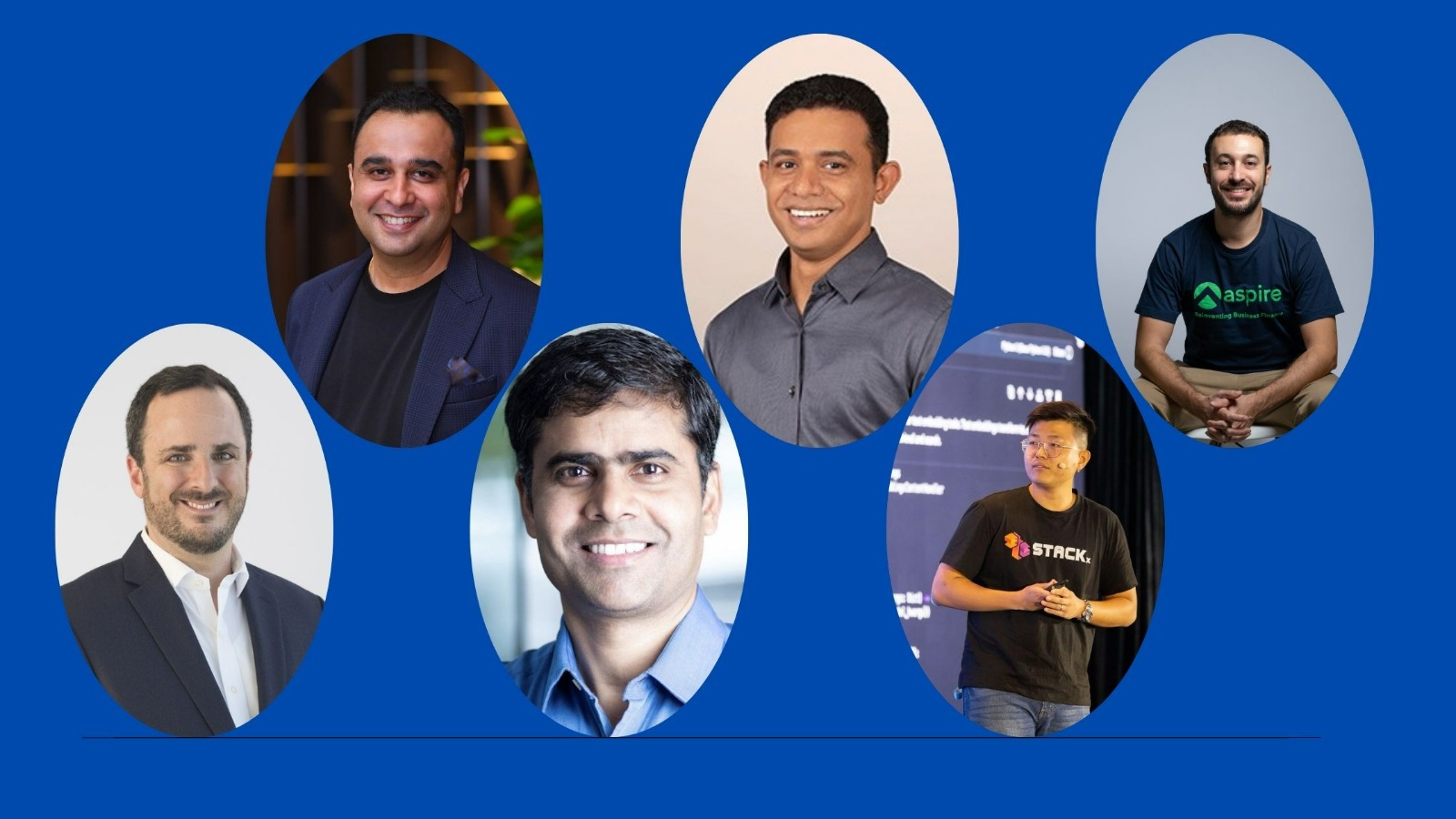Artificial intelligence (AI) is helping improve productivity and changing the way any business operates. It is eventually expected to solve complex scientific problems or make insightful decisions on par with skilled professionals.
The next breakthrough – Generative AI (GenAI) is widely recognised by companies to drive innovation and efficiency across industries.
In terms of potential, personalisation tops the list of uses, along with insight generation, content creation, and social media integration playing a significant role.
Forrester predicts, by 2030, GenAI will gain a 55 percent market share and 64 percent of software spending will be from specialised applications like security, healthcare and healthcare tools, and content marketing.
To find out more, iTNews Asia speaks to industry practitioners Jeffrey Chai, Product Manager, Data Engineering, Data Science & AI Division at GovTech Singapore; Dan Bognar, Managing Director, JAPAC, HubSpot; Kamal Brar, Senior Vice President, APAC, Confluent; Andrea Baronchelli, co-founder and CEO, Aspire; Vinay Rai, Senior Vice President – Engineering, Netradyne; and Leslie Joseph, Principal Analyst, Forrester to find out if Generative AI is already living up to its potential and transforming how we work?
iTNews Asia: How do you see Generative AI evolving for companies in the APAC region?
Chai: I see GenAI revolutionising the public sector in Singapore by enhancing efficiency, decision-making, and citizen experiences. Today, there is growing interest and demand for Singapore government agencies in leveraging GenAI to automate complex processes, generate predictive insights, and create personalised services.
In Singapore, we have Analytics.gov, a data exploitation platform to support the analysis of data by agencies to carry out GenAI capabilities, fostering collaboration and ensuring responsible AI adoption across the government.
Bognar: The transformative potential of GenAI is likely to see increased attention at a time where reinventing your business is becoming an imperative, even within regional business and technology hubs like Singapore.

Just as 2023 focused on the hype and promise of GenAI, 2024 will see the spotlight on the real-world impact and use cases of the technology. As the dust settles, the focus will be on GenAI’s ability to drive tangible value for businesses.
– Dan Bognar, Managing Director, JAPAC, HubSpot
AI is levelling the playing field for SMEs to compete with larger enterprises without the need for bigger budgets or teams. The activities that once required substantial time and resources no longer will, opening new pathways for growth and improving customer experiences for SMEs.
SMEs looking to adopt AI capabilities should consider choosing a platform that’s easy to use, and that has AI-powered solutions built into the underlying platform. This simplifies workflow by reducing the need for employees to constantly switch between multiple technology solutions to complete their tasks and facilitates employee adoption.
After all, AI delivers the best results when deployed in conjunction with human ingenuity.
Baronchelli: Gen AI is poised to reshape the delivery and consumption of financial services. Its transformative potential lies in its ability to extract information on areas such as market dynamics or trends from extensive data sets, empowering finance leaders with insights for more effective decision making.
This data can significantly shift how finance teams work. With the support of GenAI tools, finance teams no longer need to invest significant resources to labour-intensive tasks such as data analysis. This enables them to focus on innovation, other higher-skilled tasks, or delivering better service – all of which add more value to the organisation and their customers.
The role of GenAI will only become more pronounced in the near future, with governments in digital-first economies providing high levels of support to accelerate AI development and adoption on a national scale.
Brar: Over 2024, there will be a significant push to improve the accuracy of AI learning models. Making data transient and reflective of the current state will be a priority as businesses look to continuously enrich AI applications and use cases, with a view to delivering applications and services in real time.
Tapping on GenAI solutions for marketing and customer engagement will take centre stage, especially in more developed economies like Singapore.
Rai: GenAI can allow room for a lot more personalised use cases and help to create new stuff just like a human. It can be essentially used as a tool to improve your productivity, but not blindly relied on.
However, as per Amara’s Law, we tend to overestimate the effect of technology in the short run and underestimate the effect in the long run. This is similar to the Gartner hype cycle, where there is a peak of expectations from technology trigger and trough of disillusionment, followed by a slightly upward slope that eventually settles at the final levels of productivity. We should expect a similar cycle with Gen AI.

APAC is also the hub of software development – and I expect the use of Generative AI to grow, as an assistant, that can help expedite implementation of ideas. I expect good engineers to become 10x better, and the gap between the average engineer to a good engineer to widen even further.
– Vinay Rai, Senior Vice President – Engineering, Netradyne
I anticipate that anything that requires precise outcomes or the risk of imprecise outcomes is high – e.g. creating P&L statements for public companies, or driving on roads – will come in, at a later point in time. The more progressive countries may start using Generative AI to make their judiciary more efficient and fairer, as the implicit or explicit bias of judges (who are humans too) can be eliminated largely. This can be a game changer in many countries, like India which have an embarrassingly large pile up of pending cases.
In general, I expect the governments across APAC to bring in regulations that will ensure Generative AI is used in a regulated manner, so it cannot be used for propaganda. Accordingly, I expect the use of Generative AI to be regulated in media and social networks.
Joseph: In case of transformative technologies like genAI, their impact is overestimated in the short term and underestimated in the long term.
We are already starting to see companies try and apply the capabilities, and this will go on in the long term for even decades. The problem is the companies have a dramatic difference in their vision for genAI and the actual value or the impact it drives on the business.
A lot of the meaningful and transformative use cases are still happening, but that requires the organisation to have a certain maturity, in terms of its own data estate, data governance among other capabilities to meet the desired value.
iTNews Asia: Are there specific industries that will benefit more from GenAI?
Bognar: Customer-centric functions like marketing, sales, and customer service are poised to experience outsized impacts from GenAI. GenAI is empowering marketing, sales, and service professionals with enhanced productivity and efficiencies to drive more effective results by automating previously manual intensive tasks.
Today’s GenAI tools can help marketers easily remix content from one format or channel to another, allowing businesses to vastly augment the output of existing marketing teams.
Beyond content creation, the data processing and generative capabilities of GenAI tools can also help marketers conduct market research and produce data-driven insights that can be leveraged to better serve customers. One example would be the use of natural language chatbots to assist with tasks, or unifying data sources across the organisation to provide personalised customer insights for service or sales teams to level up prospective outreach and response rates.
From boosting creativity and overcoming writer’s block, to enabling effective prospecting and faster resolution to customer queries, GenAI is redefining productivity and helping teams win back time in their day.
Baronchelli: Companies within fast growing digital-first markets such as those in Asia Pacific can leverage GenAI powered growth opportunities in many ways. Some key areas of transformation include data-backed decision making, risk management and market forecasting, ideation and innovation and cost savings.
Beyond the finance sector, industries that stand to gain outsized benefits from GenAI adoption are typically customer-centric or data-intensive sectors.
Brar: Some of the popular GenAI use cases we have seen include customer service chatbot, co-pilot / content creation, semantic search and decision support, and these cut across most industries.
Many GenAI companies are using data streaming to build connected customer experiences and streamline their business operations to be more real-time.
For example, one of our customers uses an AI-powered customer intelligence platform to manage contact centres and customer engagements. With faster, fresher data and more real-time insights available, the customer is better equipped to meet the needs of its customers.
Given the diversity of languages in the Asia region, we can expect huge opportunities for GenAI models based on natural language processing to facilitate language translation and localisation efforts for companies operating in diverse linguistic regions across Asia.
Rai: I see top generative AI trends transforming developer productivity, content creation, data analysis and automation of routine time consuming tasks across industries.
There is also great potential in any sector where the cost for an error is low and the benefit of productivity is very high. For instance, GenAI can be an amazing tool in the financial industry to personalise services and products, create opportunities, manage risk and fraud, enable transparency and compliance, and automate operations and reduce costs.
But as stated in an earlier example above, in the case of publishing a balance sheet or profit and loss account based on which investors are going to make investment decisions, even a small error could leave a huge impact.
Hence, I feel GenAI can be helpful, but it will remain as an assistant to professionals for the foreseeable future.
Joseph: Every industry stands to benefit from generative AI, depending on the use case.

One obvious and universal use case is the leverage of generative AI in software development, where software developers are using code generation tools to consistently achieve 40 percent to 55 percent task-productivity gains.
– Leslie Joseph, Principal Analyst, Forrester
At the same time, industries where content production is core to the business model, such as professional and technical services, finance and insurance, consulting, education, and creative industries such as design, advertising and media are already seeing see a direct and immediate impact.
iTNews Asia: What do you see as the challenges and ethical considerations of GenAI? How can we overcome them?
Chai: GenAI raises critical ethical concerns around bias, privacy, and even potential job competitiveness. To address these, it is essential for any organisation to implement necessary ethical guidelines, invest in diverse and representative training data, and still pay attention to human oversight and review processes for now.
Analytics.gov is designed to facilitate this initial step by providing a robust, cloud-agnostic platform for GenAI experimentation, deployment, and monitoring. We encourage organisations and agencies to start small, with pilot projects, and gradually scale up as confidence and expertise grow.
Bognar: Gen AI brings the promise of unprecedented efficiency and personalisation, but success also requires responsible use.
It is important for gen AI tools to be developed around a stringent set of principles and ethics that prioritise data protection and consumer consent at its core.
AI Ethics principles provide a framework that informs AI product development and guides us in creating AI tools. Human teams are essential to ethical AI development, playing a key role in design choices or training data selection.
Long term success requires constant reviews and iteration of AI algorithms, identifying potential risks related to hallucinations or data security. This ensures that intended outcomes and customer experiences remain aligned with evolving expectations.
Baronchelli: The ethical challenges and considerations are essential to address for long term success.

Some significant obstacles include bias, i.e. the output from gen AI models are only as good as the data they’re trained on, data that is inconsistent in quality or doesn’t align with the intended use case, misinformation, privacy and transparency.
– Andrea Baronchelli, co-founder and CEO, Aspire
Efforts to drive responsible and ethical AI use are being led at a government level in many economies. For instance, Singapore recently unveiled its updated National AI Strategy, a blueprint for the country that focuses on preparing the economy to embrace and utilise AI, with other major SEA economies also having similar initiatives in place.
Brar: AI is a complex, nebulous technology to navigate – it moved so quickly in 2023 that businesses and governments have faced a serious challenge keeping up with governance and regulation guidelines.
The top challenges and ethical considerations of GenAI include generating inaccurate/biased information (i.e. AI hallucinations), security risks and autonomy of information.
As AI systems become more autonomous, questions arise around who is responsible for their actions and decisions. Establishing clear frameworks for accountability and oversight and incorporating human oversight into AI systems is critical to harness control.
The collection and analysis of vast amounts of data also raises security concerns around cybersecurity attacks, fraud exploitation, the issue of individual privacy and more.
The root of these issues lies in overall regulation and reliability of information sources. While the regulatory frameworks are being put in place, the responsibility is on enterprises who have built the technology and governments to come together and to ensure that data is being used in the right spirit.
Rai: GenAI uses a lot of data aggregated from various sources and people to train their models, and an interesting ethical question is – Will companies share the rewards with the original creators?
There are several legal and ethical issues on how the training data for the AI tool is gathered, whether it includes copyright-protected material, and whether permission or a licence from the rights holder has been acquired, or needs to be acquired.
It is also important to keep the Gen AI models away from bad actors who can misuse AI for fraud, corruption, data breach or to spread disinformation, engage in predatory practices, or undermine trust
Joseph: The rise of AI, and particularly generative AI, has led to the need to be more conversant with the social impact and ethics of AI. We need to address these challenges at three levels.
The first is at the level of the individual. This is where people and society should be educated about issues such as hallucination, bias and algorithmic alignment with human value systems.
The second is at an organisational level, companies need to address issues such as data quality, AI governance, cultural transformation of the workforce and AI trust. Forrester’s framework, ‘Seven Levers of trusted AI’, offers the key considerations for trust in AI, which are: accountability, competence, consistency, dependability, empathy, integrity, and transparency.
The third is at the level of society itself, where governmental bodies need to seek the right balance between support for technological innovation and AI entrepreneurship on one end against principles such as inclusive growth, transparency, safety and accountability on the other.
iTNews Asia: Can you share important limitations of GenAI based on your experience dealing with customers and deploying it for them?
Bognar: Business leaders will have to use their discretion to determine whether a task is better suited for gen AI or a human team.
There are generally three instances where human intervention is warranted, these being – when customers want to be helped by a human, when you don’t have confidence in an AI’s answer and when the risk of letting the customer down is too high
An example would be flexibility on rules in line with emerging issues. In situations involving highly complex information and a high risk of misinterpretation, human agents can think critically or out-of-the-box to develop viable solutions, as opposed to gen AI.
Brar: Data streaming, which produces and consumes data in real-time from completely disparate parts of the organisation, plays a pivotal role in AI for good reason.

The fundamental issue of modern AI lies with a lack of access to relevant, real-time data that AI applications need in a timely, secure, and scalable way. Connecting AI models to enterprise data in real-time is one of more challenging problems to solve.
– Kamal Brar, Senior Vice President, APAC, Confluent
We have also built a complete Data Streaming Platform that allows customers to build a shared source of real-time truth for sophisticated model building and fine-tuning, bring real-time context at query time, reduce innovation friction as new AI apps and models become available with reusable and universal data products, and build governed, secured, and trusted AI to minimise hallucinations with trustworthy, real-time data streams.
Rai: While the Gen AI can improve productivity in many ways – for example, Netradyne provides a conversational interface – where they can converse with the system like they would with an extremely intelligent assistant, who can process the essence of the question, dive deep in large amount of data, and come back with a crisp and meaningful data and explanation of the data. This saves immense amount of time for our customers.
And this data is right almost all the time and can be used by executives to quickly get a sense of how safe their fleet is. Further, they can also ask deep analytical questions, and do not have to wait for their data analysts or teams to revert with responses.
However, the output produced by Gen AI still needs to be vetted to make sure there was no mistake in interpretation of the question, before this data can be used for decisions where the cost of mistakes is high – e.g. giving bonuses to best drivers and assigning coaching to drivers with lower driving safety scores.
Talking about systems in general, if the Gen AI model is trained on good and bad data, both – it can hallucinate and leave people with incorrect learnings.
Another big risk with Gen AI is it can potentially be used for false propaganda.
iTNews Asia: How crucial is the data procured by GenAI, and can GenAI effectively utilise and apply this data in a responsible manner?
Chai: Limitations include ensuring transparency, explainability, and accountability in GenAI decision-making processes.
In Singapore, aside from agencies’ own data systems, they may have their data management capabilities. There is a central product developed by GovTech Singapore known as Cloak that helps everyday officers apply data anonymisation techniques to datasets and review re-identification risks.
Additionally, AG provides features to help users of the platform detect bias to ensure model quality and explainability, fostering trustworthy AI/ML development.
Bognar: The effectiveness of any gen AI solution is greatly influenced by not only the quality of data but its readiness to be ingested. Gen AI is trained on immense volumes of data with which it learns to identify patterns, cultural nuances, as well as industry specific perspectives that shape its responses and output.
Quality data enables businesses to supercharge their AI-powered sales and marketing strategies with invaluable, data-driven, market insights, ultimately helping them create deeper connections with their customers.
Companies should constantly assess their gen AI models for any security vulnerabilities that can lead to compromised data or manipulation of outputs.
Baronchelli: Gen AI models that are improperly trained are prone to hallucinations – outputs based on fabricated or misinterpreted information – that can mislead business leaders into making bad decisions. Addressing this involves a multi-pronged approach that spans the areas of data quality, transparency, and security.
Sources of training data should be comprehensively reviewed when taking use cases, local cultural nuances, and diversity parameters into consideration. Training data should be cleansed to address errors, inconsistencies, and potential biases. Techniques like data augmentation can expand datasets with synthetic data for training, reducing reliance on potentially biased sources.
Brar: Most companies are now realising that LLMs don’t stand alone. Retrieval augmented generation has emerged as the common pattern for combining enterprise data with AI in a way that avoids hallucination and allows granular access controls.
Data streaming platforms play a pivotal role in enriching RAG-enabled workloads with contextual and trustworthy data. It enables companies to tap into a continuous stream of real-time data from the systems that power the business and transform it into the right format to be used by vector databases for AI applications.
iTNews Asia: What are your perspectives on the legal and privacy implications of AI applications?
Chai: Legal and privacy implications must be carefully addressed through robust data protection policies and adherence to regulations.

While costs may pose an initial barrier, the long-term benefits of GenAI adoption, such as enhanced productivity, improved decision-making, and transformed citizen experiences, far outweigh the costs.
-Jeffrey Chai, Product Manager, Data Engineering, Data Science & AI Division at GovTech Singapore
Baronchelli: Barriers to broad adoption remain today, with some key challenges in legal and privacy concerns and talent.
Staying on the right side of legal and data privacy requirements involves keeping abreast of changing regulations, implementing robust data security measures, obtaining user consent for data collection, making efforts to eliminate bias in training data, using models with explainable AI capabilities, and collaborating with public and private stakeholders for sharing of best practices.
Companies need to invest in comprehensive employee training that includes tips for accurate data queries, efficient AI utilisation, and the limitations of AI applications.
We expect many concerns to be addressed in the near future.
Continued adoption and development of gen AI is likely to lead to increasingly structured regulation, more companies hiring AI implementation experts, employees becoming more comfortable using gen AI, and AI tools strengthening fact-checking capabilities.

